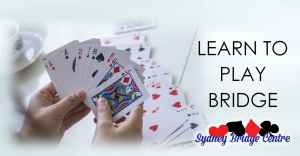City and Canada Bay – Monday Morning 8th July 2024.

Last Monday the city session was playing normal matchpoint pairs while Strathfield was playing a State Teams qualifier (scored by IMPs). Board 23 was an example of where I might have done something different because of the scoring method.
The auction is likely to be uncontested with East West having almost all the values. West will open 1♠. East will clearly want to force to game but at first glance doesn’t have an obvious bid (2♥ shows at least 5 hearts, game forcing spade raises usually show at least 4 card support). There is, however, one useful bid that describes the hand well – 3NT. This is usually played as showing 13-15 points and exactly 4333 shape (normally with 3 card support for the major – with 4 card support you’d start with a game forcing 2NT raise). That’s a very descriptive bid and you want that for a bid that takes up so much space in the auction.
What should West do now? It’s close. Even though slam is good on these two hands (more on the play below) it’s not clear to go beyond 4♠. Opposite a minimum of 13 points it’s by no means clear that slam will have any play. Here, both East and West are close to maximum for their actions and that’s why slam is good – but it’s hard to diagnose that. If West does take an optimistic view and look for slam (perhaps with a 4♣ cue bid) then East can co-operate with 4♥ and now West might go further.
One thing I might consider, however, at matchpoints is to pass 3NT! Yes it’s a little risky (a diamond lead could put the contract at risk) but there is a reasonable chance that it will make the same number of tricks as spades and that will score an extra 10 points. See advanced section for why that might be the case.
Playing IMPs that 10 points is irrelevant (whether you score +620 or +630 makes no difference) but at matchpoint pairs it is huge! That’s because at matchpoints you score points based on how many other pairs’ score you beat, not by how much you beat them. At IMPs it’s the size of the difference that matters. Also every board is worth exactly the same at matchpoints – definitely not the case at IMPs where some boards are worth way more than others (make 2♣ at your table which is beaten at the other table and you might score 4 imps, make 6♠ which is beaten at the other table and you might score 17 imps!).
What about the play? Let’s start with the play in 4♠ since that is where almost everyone did play. North has a clear ♦K lead which West will win. A lot of pairs seem to have made 11 tricks – probably by crossing to ♠K and then taking a losing spade finesse to North who cashes ♦Q. But there’s a virtually risk-free way of making 12 tricks. Cash ♠AK (which leaves North with the winning ♠Q). Now play ♥K and overtake ♥J to play another winning heart and discard the ♦5. This stands up so now play the 4th heart discarding ♣4. The only trick North South get is the ♠Q. But even if North had ruffed it wouldn’t matter because declarer has got rid of his ♦5 loser on the same trick. Whenever the hand with the last trump has at least 2 hearts this will be OK. This is also the best line if you are playing in 6♠.
The only risk would be if North only had 1 heart and could ruff the 2nd heart before declarer could get a discard. A 6-1 heart break would be very unlucky. But even then that will still be 11 tricks so a 4♠ contract is not at risk. Even if trumps split 4-1 it’s still safe to make at least 10 tricks (the worst that could happen is the hand with the 2 remaining trumps can ruff the 2nd round of hearts with the small one and then cash ♦Q and ♠Q – but then declarer’s 4th club could still be discarded on a heart).
What might happen if the hand was played in 3NT? On a non-diamond lead declarer can play on spades and even if he guesses wrong and loses a trick to ♠Q that will still be 12 easy tricks (4 spades, 4 hearts, 1 diamond and 3 clubs). On a diamond lead you still have at least 10 top tricks (2 spades, 4 hearts, 1 diamond and 3 clubs) so the contract isn’t at risk. But it’s possible for declarer to make all 13 tricks if he can find ♠Q – see advanced section for how he might go about doing that.
Key points to note
- A 3NT response to a 1 major opening bid is often played as 13-15 with exactly 4333. That’s very descriptive.
- As you get more advanced at bridge it’s important to understand that games scored by IMPs and by matchpoints are very different – and the bids and plays you make should vary accordingly.
- Holding extra values above normal game values might point to trying to play 3NT instead of 4 major in the hope of scoring 10 more points than other pairs.
- If you have a key guess to make in one suit (usually finding the Q) it’s worth playing other suits first to try and find out more about the defenders’ hands. Sometimes that might even turn what seems at first glance to be a guess into a mathematical certainty!
More advanced
Why at matchpoints might West decide to play 3NT instead of 4♠ here?
You often see players at pairs preferring 3NT in the hope of scoring the extra 10 points over a major suit contract. That’s all very well but it’s worth considering when that’s likely to work and when it isn’t.
With around 25-26 points (the normal values needed for game) it is usually right to play in the trump fit – you may be able to ruff some of your side suit losers in dummy; or use trumps to help establish a side suit to discard losers on. In no-trumps you can’t do either of those things. So often you see players choosing 3NT but ending up with 9 tricks for +600 when others are scoring 10 in 4 major for +620. Even when they
score 10 tricks for +630 and think they’ve done well, they frequently find they have actually done badly because now everyone else is in 4 major making 11 tricks for +650!
A time it IS likely to be right to play 3NT is when you have extra values (e.g. 28-30). Why is that so? Because those extra values are frequently queens and jacks in the side suits – which may well be winners in their own right and not need to be ruffed in dummy; or the suit may be running without needing any ruffs to establish it. This is when no-trumps may well make the same number of tricks as the suit contract and will score that extra 10 points (e.g. 660 v 650 or 630 v 620). Here West holds 17 points opposite 13-15 so he knows his side is close to slam and, if they choose not to look for slam, then they will definitely have extra values for game. That’s why passing 3NT would be a reasonable shot at matchpoints (but not something to even consider at IMPs where that extra 10 points is effectively worthless).
I said declarer might be able to make 13 tricks if he can diagnose who has ♠Q. Let’s see how he might do that.
When you have a key suit with a guess in (i.e. spades here) you should generally play all the other suits first to try and count some of the shape of the defenders’ hands – that might give you a clue about the best way to play the key suit. For example if one player had discarded on the 2nd round of hearts, that would place 6 hearts with the other defender – which massively changes the odds of how long they might then be in spades.
On this hand the count doesn’t prove very helpful. You would win ♦A, cash 4 rounds of hearts discarding ♦5 and a spade from hand (noting that North started with 4 hearts and South 3). Then play on clubs (noting they are 3-3). So all you know is that North started with 7 cards in hearts/clubs and South started with 6. That of itself isn’t much help in diagnosing the spade layout. But the shape isn’t the only thing to consider – watching discards is very important too! Not only what they are but how easily the defenders make them – if they squirm and think for a while it’s usually indicative that they have a problem!
There are two key clues on this hand.
- On the 4th heart South has to make a discard and he will almost certainly throw a diamond. Almost all defenders make their easy discards first and a lot of the time that will be from a 5 card suit (it can be very dangerous to discard from a 4 card suit but a 5 card suit is usually safer).
- On the 13th club West is down to ♠AJ10x and East ♠Kxx and a diamond. Both defenders have to make a discard. South has an easy diamond discard but what about North? He will be holding ♠Qxx and ♦KQ and has to make a discard on that club. He may be reluctant to throw away a winning diamond and let go a spade. Or he may squirm a bit before letting go a diamond.
How do these clues help?
- A defender’s 1st discard is often from a 5 card suit. If declarer decides that is what South has done then he can determine South only has 2 spades (he is known to have 3 hearts and 3 clubs). Which means North has 3 spades. Hence the odds are to play North for ♠Q.
- North’s discard of a winning diamond (or squirming!) may also be indicative of him holding length in spades.
So if declarer judges what’s going on he may either play ♠AK or finesse against North and could make all 13 tricks!
What’s the corollary to all this? As an advanced defender you want to try and think ahead to what your discard problems are going to be. Then either make a key discard early in the hand or at least be ready to make it smoothly when the time comes. Now it’s much harder for declarer to diagnose what’s going on! Remember, however, it is grossly unethical for a defender to try and mislead declarer by deliberately thinking for a long time before making a discard when they don’t have a problem. That might be legitimate in poker but it has no place in bridge!
Julian Foster (many times NSW representative)



